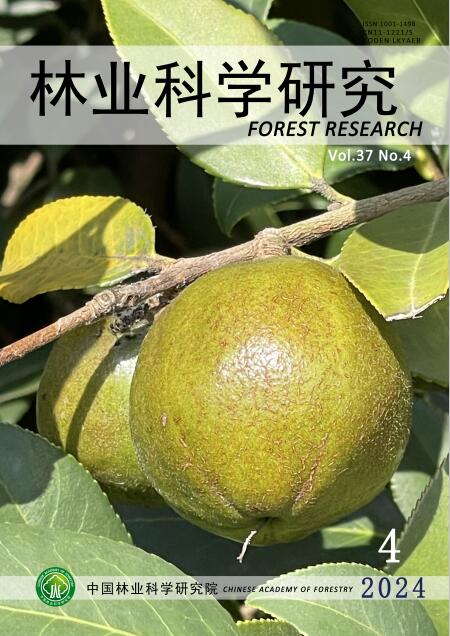Selection of Different Trees/Shrubs Species for Rehabilitation of Degraded Lands in Wag-Lasta Area, Northeastern Ethiopia
Q4 Agricultural and Biological Sciences
引用次数: 3
Abstract
Due to human and livestock population pressure, land degradation is the main problem in many part of Ethiopia. To avert the situation, tree and shrub species selection on degraded lands are valuable tool for ecological restoration. Therefore, the aim of this study was to select the best performing tree and shrub species in three agro-ecological zones of Waglasta area, Ethiopia. The experiment was conducted in randomized block design with three replications in highland, mid altitude, and lowland sites. For total experimental setup 21 (seven for lowland, eight for mid altitude and six for highland) tree and shrub species were used. Growth and survival rate data were collected every 3 months interval for one year and every 6 months up to the end of the experiment. The result indicated that L. pallid (2.52 ± 0.19 m) at lowland site, Acacia senegal (1.32±0.23 m) at mid altitude and Acacia decurrens (4.0 ± 0.46 m) at highland site had shown better performance in height. Similarly, Moringa stenopetala at lowland, Jatropha carcus at mid altitude and Acacia saligna at highland site had shown 8.63 ± 2.37 cm, 3.1 ± 0.2 cm and 7.06 ± 0.75 cm performance in root collar diameter, respectively. However, the survival rate was higher for A. senegal (43 ± 7%) and M. stenoptella (44 ± 17%) at lowland site, A. senegal (98 ± 2%) at mid altitude and A. saligna (63.9 ± 20.0%) at highland site. Therefore, to restore degraded lands and to support the on-going land rehabilitation programs of Wag-lasta area, we recommend A. senegal and M. stenoptella for lowland site, A. senegal for mid altitude areas and A. saligna for highland site of Lalibela, Abergele and Sekota and similar agro-climatic zones. However, additional studies regarding soil nutrient dynamics, fostering effect and tree nursing should be integrated to develop sound ecological restoration strategies in the growth corridor as well as in the region.埃塞俄比亚东北部瓦格-拉斯塔地区退化土地恢复中不同乔灌木树种选择
由于人口和牲畜数量的压力,土地退化是埃塞俄比亚许多地区的主要问题。为了避免这种情况,在退化土地上进行乔灌木物种选择是生态恢复的重要手段。因此,本研究的目的是在埃塞俄比亚Waglasta地区的三个农业生态区中选择表现最好的乔灌木树种。试验采用随机区组设计,在高原、中海拔和低地3个重复。试验共采用乔灌木树种21种(低海拔7种,中海拔8种,高原6种)。生长和存活率每隔3个月采集1年,每隔6个月采集一次,直至试验结束。结果表明,低海拔白杨(2.52±0.19 m)、中海拔塞内加尔金合欢(1.32±0.23 m)和高原金合欢(4.0±0.46 m)的高度表现较好。低海拔辣木、中海拔麻疯树和高原金合欢的根颈直径分别为8.63±2.37 cm、3.1±0.2 cm和7.06±0.75 cm。而低海拔地区塞内加尔沙蚤(43±7%)和窄纹沙蚤(44±17%)的存活率最高,高原地区塞内加尔沙蚤(98±2%)和沙蚤(63.9±20.0%)的存活率最高。因此,为了恢复退化的土地并支持wagg -lasta地区正在进行的土地恢复计划,我们建议在Lalibela、Abergele和Sekota及类似农业气候带的低地地点种植塞内加尔拟南蝽和M. stenoptella,在中高海拔地区种植塞内加尔拟南蝽,在高原地点种植saligna。但是,还需要对土壤养分动态、培育效果和树木护理进行进一步的研究,以制定良好的生长走廊和区域生态恢复战略。
本文章由计算机程序翻译,如有差异,请以英文原文为准。
求助全文
约1分钟内获得全文
求助全文
来源期刊

林业科学研究
Environmental Science-Ecology
CiteScore
0.90
自引率
0.00%
发文量
4834
期刊介绍:
Forestry Research is a comprehensive academic journal of forestry science organized by the Chinese Academy of Forestry. The main task is to reflect the latest research results, academic papers and research reports, scientific and technological developments and information on forestry science mainly organized by the Chinese Academy of Forestry, to promote academic exchanges at home and abroad, to carry out academic discussions, to flourish forestry science, and to better serve China's forestry construction.
The main contents are: forest seeds, seedling afforestation, forest plants, forest genetic breeding, tree physiology and biochemistry, forest insects, resource insects, forest pathology, forest microorganisms, forest birds and animals, forest soil, forest ecology, forest management, forest manager, forestry remote sensing, forestry biotechnology and other new technologies, new methods, and to increase the development strategy of forestry, the trend of development of disciplines, technology policies and strategies, etc., and to increase the forestry development strategy, the trend of development of disciplines, technology policies and strategies. It is suitable for scientists and technicians of forestry and related disciplines, teachers and students of colleges and universities, leaders and managers, and grassroots forestry workers.
 求助内容:
求助内容: 应助结果提醒方式:
应助结果提醒方式:


